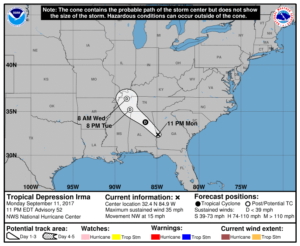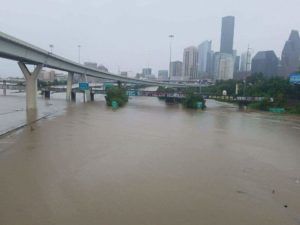Life can produce very sudden turns of events. The turmoil and destruction dished out by Hurricanes Harvey and Irma may have been predictable in the abstract, that is, events that could occur at some point someday, but that means little when the day arrives that a hurricane is bearing down on your shores.
More than three months ago, I retired from the American Planning Association to move into a combination of activities I had tailored to my own skills and interests, which I have previously announced and discussed. Over the summer, I began setting the stage for introducing these new enterprises, but my wife and I also took time for a long-awaited excursion to Norway to celebrate this new phase of our lives. I began to share that story in August with blogs about our journey.
Meanwhile, I began work on the creation of Jim Schwab Consulting LLC, my solo planning practice. Just two weeks ago, with the help of a web designer, Luke Renn, I unveiled a business website that is a companion to this one. You can find it at the link above. But when we began to construct the site in mid-August, I had no idea what would ensue. By the time we had completed the new website, Harvey was making landfall on the Texas coast and dumping unimaginable amounts of rain in the Houston metropolitan area, and then on Port Arthur and Beaumont, Texas.
As Harvey was losing steam and moving inland, Irma, initially a Category 5 hurricane, devastated the small island of Barbuda, the smaller part of the tiny Caribbean nation of Antigua and Barbuda. Officials estimate that 95 percent of the island’s buildings were damaged or destroyed, and residents have been evacuated to the larger island of Antigua, partly in advance of an anticipated second attack by Hurricane Jose, following in Irma’s wake, that mercifully did not come to pass. That would have been bad enough, but the storm also badly rocked St. Thomas and St. John in the U.S. Virgin Islands, sideswiped Puerto Rico and the northern coast of Cuba, and finally passed through the Florida Keys, demolishing much of the community there, and sped up the western coast of Florida through places like Naples and Tampa. Irma was so huge that its waves and winds also buffeted numerous coastal communities in eastern Florida, no doubt shaking many people in Miami Beach to their core.
I will soon complete the tour of Norway on this blog, but it seemed more important to offer some insights, in some small way, into what is happening and will be needed in the recovery in Texas. Irma has been too large an event for me yet to absorb its totality and even begin to understand how I can possibly enhance what people know from the daily news barrage that has accompanied it. I am sure emergency management personnel at all levels are already weary but patriotically staffing their posts.
Planners like me must prepare for the much longer endurance test known as long-term recovery planning. While it is far too easy to say what, if any, role I may be asked to play in this drama, there have been conversations. Recovery, unlike emergency response, will take months to unfold. I will do my best to share what I learn. It is important because long-term recovery provides the opportunity to hash out major questions of the future and the resilience of the surviving communities. It has always been possible to learn from experience and to improve so that we lose fewer lives, suffer fewer losses, and rebound more quickly in future disasters. But possible is not certain. It is up to all of us to decide that we will rebuild with a resilient future in mind.
Jim Schwab


